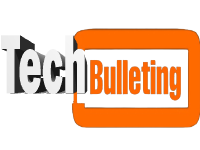News
Sirler: The Modern-Day Knights
Published
2 months agoon
By
Ahmad khan
Introduction
Enter the Sirler, our contemporary knights, who stand guard over the digital realms much like their medieval counterparts defended their kingdoms. But who are these modern knights, and what role do they play in our society today? Let’s delve into the fascinating world of the and uncover their significance in our increasingly digital age.
Who Are the Sirler?
Origins of the Sirler
The term “Sirler” may not be familiar to everyone, but their role is indispensable. Derived from the concept of knights (“Sir”) and merging with the digital age, are individuals who have taken up the mantle of defending cyberspace. They are the unsung heroes of the internet, battling against cyber threats, hacking attempts, and digital espionage.
The Evolution of Sirler
While traditional knights wore armor and wielded swords, utilize advanced technology and cyber tools. Their evolution has been driven by the rapid advancement of technology and the growing importance of cybersecurity. From early hackers who sought to expose vulnerabilities for the greater good, have emerged as a professional and ethical force dedicated to protecting digital infrastructures.
The Role of Sirler in Modern Society
Guardians of the Digital Realm
play a crucial role in safeguarding sensitive information and maintaining the integrity of digital systems. They are responsible for preventing data breaches, securing networks, and ensuring the privacy of individuals and organizations. Much like how knights defended castles, protect data fortresses against invaders.
Ethical Boundaries and Responsibilities
Ethics are at the core of a duties. They operate within strict ethical boundaries, ensuring that their actions do not infringe upon the rights of individuals. Their responsibilities extend beyond mere protection; they must also navigate the complex moral landscape of privacy, transparency, and digital freedom.
Training and Skills of the Sirler
Essential Skills for a Sirler
To become a , one must possess a unique set of skills. Proficiency in cybersecurity, coding, and network management is paramount. Additionally, problem-solving abilities, critical thinking, and a deep understanding of ethical hacking are essential.
The Training Process
The path to becoming a involves rigorous training. This includes formal education in computer science or cybersecurity, followed by specialized courses in ethical hacking and digital forensics. Many also gain hands-on experience through internships or working with cybersecurity firms.
Technology and Tools Used by Sirler
Cutting-Edge Gadgets
utilize a range of cutting-edge gadgets to perform their duties. From sophisticated software for detecting malware to advanced encryption tools, their arsenal is designed to counter any digital threat. They are constantly updating their tools to keep pace with the ever-evolving cyber landscape.
Cybersecurity Measures
Implementing robust cybersecurity measures is a fundamental aspect of a job. This includes firewalls, intrusion detection systems, and regular security audits. They also employ artificial intelligence and machine learning to predict and prevent potential threats.
The Code of Honor
Core Principles
Like their historical counterparts, adhere to a code of honor. This includes principles such as integrity, vigilance, and a commitment to protecting the vulnerable. They must act with transparency and uphold the highest standards of conduct.
Comparison with Historical Knights
While knights of old fought with physical prowess, battle with intellectual and technical skills. Both, however, share a common ethos of protection and service to others, illustrating that the spirit of knighthood transcends time.
Notable Sirler in Action
High-Profile Cases
There have been numerous instances where have made headlines by thwarting major cyber attacks. These high-profile cases often involve coordinated efforts to protect national security, corporate secrets, or personal data from large-scale breaches.
Everyday Heroes
Not all gain fame and recognition; many operate behind the scenes, ensuring the safety of our digital lives on a daily basis. These everyday heroes are just as crucial, maintaining the infrastructure that allows our society to function smoothly.
Challenges Faced by Sirler
Cyber Threats
The landscape of cyber threats is constantly evolving, with new vulnerabilities and attack vectors emerging regularly. must stay ahead of these threats, often anticipating and neutralizing them before they can cause harm.
Public Perception
Despite their critical role, often face challenges in public perception. Many people are unaware of the extent of their work or may mistrust their intentions due to misconceptions about hacking and cybersecurity.
Impact on Society
Enhancing Security
significantly enhance the security of both public and private sectors. By safeguarding data and digital systems, they ensure that our personal information remains confidential and our digital interactions secure.
Fostering Trust
In a digital age where trust is paramount, help foster confidence in online transactions, communications, and services. Their work underpins the trust we place in digital platforms and technologies.
The Future of the Sirler
Technological Advancements
The future of will be shaped by technological advancements. As AI, quantum computing, and other innovations emerge, will need to adapt and develop new strategies to combat increasingly sophisticated cyber threats.
Evolving Roles
The role of is continually evolving. From focusing solely on cybersecurity, they are now also involved in policy-making, educating the public about digital safety, and developing new technologies to protect cyberspace.
How to Become a Sirler
Educational Pathways
Aspiring typically pursue degrees in computer science, information technology, or cybersecurity. Specialized certifications in ethical hacking and digital forensics are also valuable.
Career Opportunities
Career opportunities for are abundant, ranging from positions in government agencies and private corporations to independent cybersecurity consulting. The demand for skilled continues to grow as the digital landscape expands.
Sirler in Popular Culture
Movies and TV Shows
The concept of has permeated popular culture, with numerous movies and TV shows depicting cyber warriors battling digital threats. These portrayals often highlight the excitement and challenges of being a .
Literature and Video Games
Literature and video games have also embraced the archetype, presenting them as modern heroes navigating the complex world of cyberspace. These mediums help bring the concept of Sirler to a wider audience.
Ethical Dilemmas
Privacy Concerns
One of the significant ethical dilemmas faced by Sirler is balancing security with privacy. Ensuring robust protection without infringing on individual rights requires careful consideration and ethical judgment.
Balancing Power and Responsibility
Sirler wield considerable power in their ability to access and control digital systems. Balancing this power with a sense of responsibility and ensuring it is used for the greater good is a constant challenge.
Comparing Sirler to Other Modern Professions
Cybersecurity Experts
While Sirler are a type of cybersecurity expert, their role often encompasses broader responsibilities, including ethical considerations and a commitment to a code of honor that goes beyond technical skills.
Ethical Hackers
Ethical hackers, like Sirler, work to identify and fix vulnerabilities in digital systems. However, Sirler are distinguished by their adherence to a knightly code and their broader role in defending digital realms.
Conclusion
In our digital age, Sirler have become the modern-day knights, defending the integrity and security of our virtual world. Their work is crucial in maintaining trust and safety in our increasingly interconnected lives. As technology continues to evolve, so too will the role of the Sirler, ensuring that the spirit of knighthood endures in the digital realm.
FAQs
What is the primary role of a Sirler?
The primary role of a Sirler is to protect digital systems and information from cyber threats, ensuring the security and privacy of data.
How do Sirler differ from traditional knights?
While traditional knights used physical weapons to defend territories, Sirler use technology and cyber tools to protect digital spaces. Both, however, share a commitment to protection and ethical conduct.
What skills are essential for becoming a Sirler?
Essential skills for a Sirler include cybersecurity expertise, coding, network management, problem-solving, critical thinking, and ethical hacking knowledge.
Are there any famous Sirler today?
Yes, many Sirler have gained recognition for their work in preventing significant cyber attacks and enhancing cybersecurity on a national and global level.
How can one start a career as a Sirler?
Starting a career as a Sirler typically involves pursuing a degree in computer science or cybersecurity, obtaining specialized certifications, and gaining practical experience through internships or related jobs.
You may like
News
Slinguri: The Ultimate Guide to Sling Accessories
Published
2 weeks agoon
July 9, 2024By
Ahmad khan
Introduction
If you’re a firearm enthusiast or a seasoned shooter, you’ve probably heard of sling accessories, or as they are often referred to, Slinguri. These accessories are essential for anyone looking to enhance their shooting experience, providing increased mobility, comfort, and accessibility. But what exactly are sling accessories, and why are they so important?
Types of Sling Accessories
Sling Straps
Sling straps are Slinguri the most basic and essential type of sling accessory. They come in various forms to suit different needs and preferences.
Single-point Straps
Single-point straps attach to the Slinguri firearm at one point, typically near the stock. They offer great flexibility and are ideal for close-quarters combat situations. However, they might not be the best choice for long-term carry due to the lack of support.
Two-point Straps
Two-point straps attach to the firearm Slinguri at two points, usually at the stock and the barrel. This type of strap offers better stability and support, making it a popular choice for many shooters. It’s versatile and can be adjusted for various carrying styles.
Three-point Straps
Three-point straps provide an additional point Slinguri of attachment, which can offer even more stability and control. These are excellent for tactical situations where quick transitions and secure handling are crucial.
Sling Mounts
Mounts are another critical sling accessory Slinguri that allows you to attach the strap to your firearm securely.
Fixed Mounts
Fixed mounts provide a permanent point of attachment for your sling strap. They are sturdy and reliable, but they can Slinguri limit the flexibility of your setup.
Quick Detach Mounts
Quick detach mounts allow you to easily attach and detach your sling strap. This can be incredibly useful for situations Slinguri where you need to quickly adjust your setup or switch between different firearms.
Sling Swivels
Swivels are the connectors that link your Slinguri sling strap to the mounts on your firearm.
Push Button Swivels
Push button swivels are easy to use Slinguri and allow for quick attachment and detachment. They provide a secure connection and are a popular choice for many shooters.
Loop Swivels
Loop swivels offer a more traditional connection method. They are typically very durable and provide a reliable attachment point for your sling strap.
Sling Pads
Sling pads add an extra layer of comfort to your setup. They help distribute the weight of your firearm more evenly across your shoulder, reducing fatigue during long shooting sessions.
Sling Adjusters
Adjusters allow you to fine-tune the length and fit of your sling strap. This ensures that your setup is as comfortable and functional as possible.
Choosing the Right Sling Accessories
Consider Your Needs
When selecting sling accessories, the first step is to consider your specific needs. Are you looking for a setup for tactical situations, or do you need something more suited for long hunting trips?
Material and Durability
The material of your sling accessories is crucial. Look for high-quality materials like reinforced nylon or leather, which offer durability and longevity.
Comfort and Ergonomics
Comfort is key when carrying a firearm for extended periods. Look for sling accessories that offer padded straps and ergonomic designs to minimize discomfort.
Compatibility with Firearms
Ensure that the sling accessories you choose are compatible with your specific firearm. Check the manufacturer’s specifications to avoid any compatibility issues.
Installation and Maintenance of Sling Accessories
Installation Tips
Proper installation of your sling accessories is vital for their performance and your safety. Follow the manufacturer’s instructions carefully, and make sure all components are securely attached.
Maintenance Practices
Regular maintenance will ensure that your sling accessories remain in good condition. Check for any signs of wear and tear, and clean them as recommended by the manufacturer.
Popular Brands for Sling Accessories
Magpul
Magpul is a well-known brand that offers a wide range of high-quality sling accessories. Their products are known for their durability and innovative design.
Blue Force Gear
Blue Force Gear specializes in tactical sling accessories and is a favorite among military and law enforcement personnel.
Viking Tactics
Viking Tactics offers a variety of sling accessories designed for versatility and performance. Their products are popular among both professional and recreational shooters.
How to Use Sling Accessories Effectively
Proper Positioning
Positioning your sling correctly can make a significant difference in your shooting experience. Ensure that the sling is adjusted to keep your firearm in a comfortable and accessible position.
Adjusting for Comfort
Take the time to adjust your sling for maximum comfort. This may involve tweaking the length, padding, and attachment points.
Switching Between Carry Styles
Learn how to switch between different carry styles with your sling. This can be particularly useful in different shooting scenarios and can help you stay versatile.
Advantages of Using Sling Accessories
Enhanced Mobility
Sling accessories can significantly enhance your mobility by allowing you to carry your firearm more easily and move freely.
Improved Accessibility
With the right sling setup, your firearm will always be within easy reach, making it quicker to deploy in critical situations.
Better Weight Distribution
A well-designed sling setup helps distribute the weight of your firearm more evenly, reducing strain and fatigue.
Common Mistakes to Avoid with Sling Accessories
Over-tightening
Over-tightening your sling can lead to discomfort and even damage your firearm. Make sure to adjust it to a snug but comfortable fit.
Incorrect Installation
Improper installation can compromise the effectiveness of your sling accessories. Always follow the manufacturer’s guidelines.
Neglecting Maintenance
Neglecting regular maintenance can lead to premature Slinguri wear and tear. Keep your sling accessories in good condition by cleaning and inspecting them regularly.
Conclusion
Sling accessories, or Slinguri, play a crucial role in enhancing your shooting experience. From providing better mobility and accessibility to ensuring comfort during long periods of carry, these accessories are indispensable for any serious shooter. By choosing the right sling accessories, installing them correctly, and maintaining them properly, you can significantly improve your overall performance and enjoyment in the field.
FAQs
What are sling accessories used for?
Sling accessories are used to improve the comfort, mobility, and accessibility of carrying a firearm. They help distribute the weight more evenly and allow for quick adjustments and transitions.
How do I choose the right sling for my firearm?
Consider your specific needs, the material and durability of the sling, comfort, ergonomics, and compatibility with your firearm. It’s essential to choose a sling that matches your intended use and shooting style.
Can I install sling accessories myself?
Yes, most sling accessories can be installed by the user. However, it’s crucial to follow the manufacturer’s instructions to ensure proper installation and safety.
Are sling accessories universal?
Not all sling accessories are universal. It’s important to check the compatibility of the accessories with your specific firearm to ensure a proper fit.
What is the best material for sling accessories?
The best material for sling accessories depends on your needs. Reinforced nylon and leather are popular choices due to their durability and comfort.
News
Winnoise: A Comprehensive Guide to Understanding and Mitigating Unwanted Sounds
Published
4 weeks agoon
June 30, 2024By
Ahmad khan
Introduction
Winnoise, Do you ever feel like your life is just a little too noisy? From the constant hum of traffic to the cacophony of household appliances, unwanted sounds, or “winnoise,” can infiltrate our daily lives and impact our well-being. Understanding and mitigating these sounds isn’t just about creating a more pleasant environment; it’s crucial for our health and productivity. Let’s dive into the world of winnoise and explore how we can effectively manage and reduce these intrusive sounds.
The Science of Sound
Sound is an omnipresent part of our environment, but how much do we really understand about it? Sound travels in waves, and these waves are created by vibrations. When an object vibrates, it causes the air around it to move, creating sound waves that travel to our ears. These waves are measured in decibels (dB), which indicate the loudness, and frequency, which measures the pitch.
Types of Unwanted Sounds
Unwanted sounds can come from various sources, and they can be broadly categorized into three types:
- Environmental Noise: This includes sounds from traffic, aircraft, and outdoor events.
- Household Noise: This encompasses noises from appliances, conversations, and entertainment systems.
- Industrial Noise: This is generated by machinery, factories, and construction sites.
Sources of Unwanted Sounds
Let’s delve deeper into the specific sources of unwanted sounds:
- Traffic and Transportation: Cars, buses, trains, and airplanes contribute significantly to environmental noise.
- Construction Activities: The noise from drills, hammers, and heavy machinery can be disruptive, especially in urban areas.
- Household Appliances: Everyday appliances like washing machines, dishwashers, and HVAC systems can create a constant background hum.
- Industrial Machinery: Factories and industrial sites are often major sources of high-decibel noise, impacting both workers and nearby residents.
Effects of Unwanted Sounds
The impact of winnoise extends beyond mere annoyance:
- Health Implications: Prolonged exposure to high noise levels can lead to hearing loss, cardiovascular issues, and sleep disturbances.
- Impact on Productivity: Noise can distract and reduce concentration, affecting productivity in workplaces and schools.
- Psychological Effects: Continuous noise exposure can lead to stress, anxiety, and even depression.
Understanding Winnoise in Different Settings
Unwanted sounds manifest differently across various settings:
- Residential Areas: Neighborhoods often contend with noise from traffic, neighbors, and local businesses.
- Workplaces: Offices can suffer from the constant chatter of coworkers, ringing phones, and office equipment.
- Public Spaces: Parks, malls, and transit stations are hotspots for a variety of environmental noises.
Techniques for Measuring Noise Levels
Accurately measuring noise levels is the first step towards effective mitigation:
- Using Sound Level Meters: These devices provide precise measurements of noise levels in decibels.
- Smartphone Apps for Noise Measurement: Many apps now offer reliable noise level measurements, making it easier for anyone to monitor sound levels.
- Analyzing Noise Maps: These maps visually represent noise levels across different areas, helping in identifying hotspots.
Noise Regulations and Standards
Governments and organizations have set various standards and regulations to control noise levels:
- Local and International Noise Standards: Different regions have specific guidelines for acceptable noise levels.
- Government Regulations: Laws often dictate noise limits, especially in residential and commercial zones.
- Workplace Noise Regulations: Employers are required to adhere to specific noise level limits to protect workers’ health.
Strategies for Mitigating Unwanted Sounds

There are several effective strategies for reducing unwanted sounds:
- Soundproofing Solutions: Installing double-glazed windows, thick curtains, and carpets can significantly reduce noise.
- Use of Noise Barriers: Walls, fences, and vegetation can act as barriers to block and absorb sound.
- Implementing Quiet Zones: Designating areas where noise is minimized can provide a respite from the din.
Technological Solutions to Winnoise
Technology offers innovative solutions to manage noise:
- Noise-Canceling Devices: Headphones and earbuds with noise-canceling features are highly effective in reducing ambient noise.
- Acoustic Panels and Insulation: These materials absorb sound waves, reducing echo and reverberation.
- Advanced Sound Masking Systems: These systems emit a background sound that masks unwanted noise, making environments more comfortable.
Behavioral Changes to Reduce Noise
Sometimes, simple behavioral changes can make a big difference:
- Quiet Hours Policies: Establishing quiet hours can reduce noise during specific times, particularly in residential areas.
- Mindful Use of Appliances: Using appliances at lower settings or during less disruptive times can help minimize noise.
- Community Efforts and Awareness: Raising awareness and promoting noise-reducing practices within communities can lead to a more peaceful environment.
Innovations in Noise Reduction
The field of noise reduction is constantly evolving with new innovations:
- Cutting-Edge Research: Ongoing studies are exploring new materials and methods for better noise control.
- Smart Building Designs: Buildings designed with noise reduction in mind use advanced materials and architectural techniques to minimize sound transmission.
- Emerging Technologies: From AI-driven noise-canceling systems to advanced soundproofing materials, technology continues to push the boundaries of what’s possible in noise reduction.
Case Studies

Learning from real-world examples can provide valuable insights:
- Successful Noise Mitigation Projects: Cities and companies that have successfully reduced noise can offer valuable lessons and strategies.
- Lessons Learned from Different Industries: Different industries face unique noise challenges and have developed specialized solutions.
Future Trends in Noise Control
Looking ahead, the future of noise control holds exciting possibilities:
- Predictive Noise Management: Using data and AI to predict and manage noise levels before they become problematic.
- Integration with Smart City Concepts: Incorporating noise control into the broader framework of smart cities can enhance urban living environments.
Conclusion
In our increasingly noisy world, understanding and mitigating winnoise is more important than ever. From health implications to productivity impacts, the effects of unwanted sounds are far-reaching. By employing a combination of technological solutions, behavioral changes, and innovative strategies, we can create quieter, more peaceful environments. Continued efforts and awareness are crucial in our journey towards a less noisy world.
FAQs
1. What is the best way to measure noise at home?
Using a sound level meter or a reliable smartphone app can provide accurate measurements of noise levels in your home.
2. Can household plants reduce noise?
Yes, certain plants can help absorb sound and reduce noise levels. They work best in combination with other noise reduction strategies.
3. Are there health risks associated with long-term noise exposure?
Yes, long-term exposure to high noise levels can lead to hearing loss, cardiovascular issues, sleep disturbances, and increased stress.
4. How effective are noise-canceling headphones?
Noise-canceling headphones are highly effective in reducing ambient noise, making them a great solution for personal use in noisy environments.
5. What role does urban planning play in noise reduction?
Urban planning plays a crucial role in noise reduction by incorporating noise control measures into the design and layout of cities, such as green spaces, noise barriers, and thoughtful placement of industrial areas.
News
SMM Compare: Navigating the Social Media Management Landscape
Published
4 weeks agoon
June 29, 2024By
Ahmad khan
Introduction
SMM, Navigating the social media management landscape can feel like wandering through a dense forest without a map. Every path seems promising, but only a few lead to the treasure of increased engagement, brand visibility, and boosted sales. This article is your compass. We’ll explore the intricacies of social media management (SMM), compare top tools, and share best practices to ensure you’re equipped to make informed decisions.
What is Social Media Management (SMM)?
Definition of SMM
Social Media Management involves creating, scheduling, analyzing, and engaging with content posted on social media platforms like Facebook, Instagram, Twitter, and LinkedIn. It’s a multifaceted approach designed to enhance a brand’s online presence and foster meaningful connections with the audience.
Key Components of SMM
- Content Creation: Crafting posts, images, and videos that resonate with your audience.
- Scheduling: Planning and publishing content at optimal times.
- Engagement: Interacting with followers through comments, messages, and shares.
- Analytics: Measuring the performance of social media efforts and adjusting strategies accordingly.
Why is SMM Crucial for Businesses?
Enhancing Brand Visibility
Social media platforms are where billions of people spend their time. A robust SMM strategy ensures that your brand stands out in this crowded space, making it more recognizable and memorable.
Engaging with the Audience
Social media provides a direct line to your customers. Effective engagement builds a community around your brand, fosters loyalty, and can turn followers into advocates.
Driving Website Traffic
Sharing quality content with compelling calls to action drives traffic to your website, which can lead to increased sales and conversions.
Boosting Sales and Conversions
Through targeted ads and engaging content, SMM can directly impact your bottom line by converting followers into customers.
Popular Social Media Platforms for SMM
The giant of social media, Facebook offers vast reach and powerful advertising tools. Ideal for sharing a variety of content types and engaging with a diverse audience.
A visual platform that’s perfect for brands focusing on imagery and short videos. Great for storytelling and engaging with a younger demographic.
Known for its brevity, Twitter is excellent for real-time updates, customer service, and engaging in trending conversations.
The go-to platform for B2B marketing, LinkedIn helps businesses connect with professionals and establish industry authority.
A visual discovery engine, Pinterest is ideal for brands in niches like fashion, home decor, and DIY.
TikTok
A rapidly growing platform known for its short-form videos, TikTok is great for reaching Gen Z with creative and engaging content.
Essential Tools for Social Media Management
Scheduling Tools
Tools like Hootsuite and Buffer allow you to plan and schedule posts in advance, ensuring consistency without needing to be online 24/7.
Analytics Tools
Analytics tools help track the performance of your social media campaigns. They provide insights into what’s working and what’s not, enabling you to refine your strategy.
Content Creation Tools
Canva and Adobe Spark make it easy to create visually appealing content without needing a graphic design background.
Monitoring Tools
Monitoring tools like Mention and Brandwatch help you keep an ear to the ground, tracking what people are saying about your brand across the internet.
Top Social Media Management Tools Compared
Hootsuite
Overview
Hootsuite is a comprehensive social media management platform known for its robust features and user-friendly interface.
Key Features
- Multi-platform management
- Scheduling and auto-posting
- Analytics and reporting
- Social listening
Pros and Cons
Pros: Extensive features, supports multiple platforms, good analytics. Cons: Can be pricey for small businesses, steep learning curve.
Buffer
Overview
Buffer is praised for its simplicity and efficiency, making it a favorite among smaller teams and individual users.
Key Features
- Easy scheduling
- Basic analytics
- Team collaboration
Pros and Cons
Pros: User-friendly, affordable, great for small teams. Cons: Limited features compared to competitors, basic analytics.
Sprout Social
Overview
Sprout Social is a premium tool with powerful analytics and customer relationship management (CRM) features.
Key Features
- Advanced analytics
- CRM integration
- Social listening
Pros and Cons
Pros: Comprehensive features, excellent customer support. Cons: High cost, may be overkill for small businesses.
SocialBee
Overview
SocialBee stands out for its emphasis on content categories and recycling, ensuring evergreen content gets more visibility.
Key Features
- Content categorization
- Post recycling
- Concierge services
Pros and Cons
Pros: Great for evergreen content, affordable. Cons: Less intuitive interface, limited integrations.
CoSchedule
Overview
CoSchedule is a versatile tool that combines social media management with project management features.
Key Features
- Integrated calendar
- Project management
- Social scheduling
Pros and Cons
Pros: All-in-one solution, excellent for content planning. Cons: Can be complex, higher price point.
Choosing the Right SMM Tool for Your Business
Factors to Consider
When choosing an SMM tool, consider your budget, the size of your team, the platforms you use, and the specific features you need.
Case Studies
- Small Business: A local boutique using Buffer to maintain a consistent posting schedule and engage with customers.
- Medium Business: A tech startup leveraging Hootsuite’s comprehensive analytics to refine its social media strategy.
- Large Enterprise: A multinational corporation using Sprout Social for its advanced analytics and CRM integration.
Best Practices for Effective Social Media Management
Consistency is Key
Regular posting keeps your audience engaged and your brand top of mind.
Engage with Your Audience
Respond to comments, messages, and mentions to build a community around your brand.
Monitor Performance Regularly
Use analytics to track your performance and adjust your strategy as needed.
Adapt and Evolve
Stay updated with social media trends and adapt your strategy to remain relevant.
Future Trends in Social Media Management
AI and Automation
AI will play a larger role in automating tasks like scheduling and analytics, freeing up time for more strategic activities.
Influencer Marketing
Collaborating with influencers will continue to be a powerful way to reach new audiences.
Enhanced Analytics
Advanced analytics will provide deeper insights into audience behavior and campaign performance.
Personalized Customer Experiences
Brands will increasingly use data to create personalized experiences for their audience, boosting engagement and loyalty.
Conclusion
Navigating the social media management landscape might seem daunting, but with the right tools and strategies, it can be a rewarding journey. By understanding the nuances of SMM and leveraging the best tools available, businesses can significantly enhance their online presence, engage with their audience, and drive meaningful results.
FAQs
What is the best social media management tool for small businesses?
Buffer and SocialBee are often recommended for small businesses due to their affordability and ease of use.
How often should I post on social media?
Consistency is key. Aim for at least 3-5 times per week on major platforms like Facebook and Instagram.
Can social media management tools help with content creation?
Yes, tools like Canva and Adobe Spark integrate with many SMM platforms to streamline content creation.
Is it necessary to use paid social media tools?
While free tools can be helpful, paid tools often offer advanced features that can significantly enhance your SMM efforts.
How do I measure the success of my social media campaigns?
Use analytics tools to track key metrics like engagement, reach, and conversions to gauge the effectiveness of your campaigns.
Trending
-

 Life style2 months ago
Life style2 months agoRole Of A Translator Преводсч In A Multilingual World
-

 Entertainment2 weeks ago
Entertainment2 weeks agoFlixfy.lat: Your Ultimate Streaming Paradise
-

 News2 months ago
News2 months agoUnraveling the Enigma of Cumhuritey: A Journey Through Identity and Community
-

 Tech1 month ago
Tech1 month agoExploring the Digital Jungle: A Guide to AIGilbertWired Experts
-

 News2 months ago
News2 months ago5305318613: Deciphering the Enigma of Creative Expression
-

 Entertainment4 weeks ago
Entertainment4 weeks agoThe Enchanting Allure of Sanseyuan Jinzi: A Dive into Its Rich Legacy
-

 Life style2 months ago
Life style2 months agoUnveiling the Life of Beth Grosshans’ Husband: A Journey Behind the Scenes
-

 Entertainment2 months ago
Entertainment2 months agoUnlocking the Mysteries of “Serial Killer Isekai ni Oritatsu Chapter 7”: A Deep Dive
